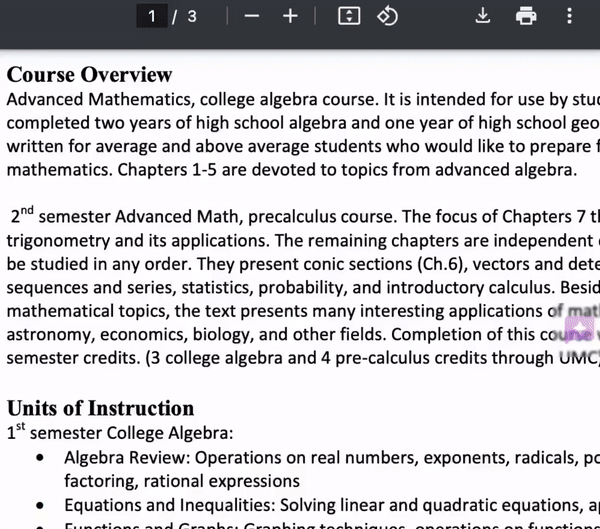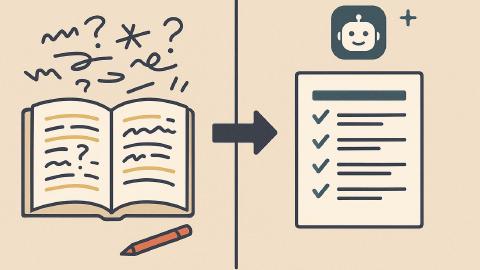How to Give Good Feedback With an AI Feedback Generator in 2025
Use this free AI feedback generator to give good feedback to your students as a teacher in 2025.
Providing students with feedback is essential for their learning and growth. However, writing meaningful and personalized feedback can take up a lot of time.
An AI feedback generator can help teachers create clear, constructive, and time-saving responses for students.
Research shows that feedback delivered to students individually and as soon as possible improves learning outcomes.
In this guide, we'll cover the key aspects of constructive feedback and how AI feedback generators can assist in making the process of providing feedback to students more efficient. Let's dive in!
What is Constructive Feedback?
Constructive feedback is information given to students to help them improve their work, skills, or understanding of a subject. It is specific, actionable, and designed to guide students toward better performance.
Unlike general praise or criticism, constructive feedback highlights strengths and provides clear suggestions for improvement.
Additionally, it should encourage self-reflection, helping students understand their learning process.
Why is Teacher Feedback Important for Students?
Teacher feedback is crucial for student development because it helps them understand their strengths and areas for improvement. Without feedback, students may struggle to recognize their mistakes and miss opportunities to grow academically.
Here are a few reasons why teacher feedback is crucial for students:
Builds Confidence and Motivation - Specific praise and guidance encourage students to continue learning and improving.
Promotes a Growth Mindset - Feedback helps students view challenges as learning opportunities rather than failures.
Enhances Communication - Clear feedback strengthens the teacher-student relationship and improves understanding.
Supports Learning Objectives - Constructive feedback aligns with lesson goals, helping students stay on track.
Encourages Self-Reflection - Students develop critical thinking skills by analyzing and applying feedback to their work.
AI tools in education can make this process more efficient by providing personalized, consistent feedback. By using AI-powered feedback solutions, teachers can save time while ensuring students receive meaningful and actionable insights.
Want to integrate AI into your workflows? Check out our list of the best AI tools for teachers in 2025!
Types of Feedback & How to Provide Them
There are different types of feedback that teachers can provide to help students improve. Understanding these types allows educators to give responses that are clear, effective, and supportive.
Here are three main types of feedback and how to provide them.
Positive Feedback
Positive feedback highlights what a student has done well. It reinforces good practices and encourages continued effort.
This type of feedback should be specific rather than vague to ensure students understand their strengths. A well-structured positive comment can motivate students and build their confidence.
Example: "Your introduction is engaging and clearly presents your main argument. Keep up the great work!"
Negative Feedback
Negative feedback points out areas where a student needs improvement. However, it should be framed in a way that helps students learn rather than discouraging them.
Instead of simply stating what is wrong, provide clear suggestions on how to improve. The goal is to help students understand their mistakes and make necessary corrections.
Example: "Your paragraph lacks a clear topic sentence. Try starting with a sentence that introduces the main idea of the paragraph."
Constructive Feedback
Constructive feedback combines positive and negative elements to guide student improvement. It acknowledges strengths while also providing actionable steps for growth.
This type of feedback is clear, specific, and designed to help students refine their work. Encouraging self-reflection is also important, as it allows students to take ownership of their learning.
Example: "Your essay presents strong arguments, but adding more supporting evidence will make them even more convincing. Consider including specific examples to strengthen your points."
How to Give Good Feedback to Students
Providing good feedback helps students understand their strengths and areas for improvement. Effective feedback should be specific, timely, and encourage self-reflection.
Here's how to give food feedback to students:
Be Specific - Clearly identify what the student did well and what needs improvement instead of using vague statements.
Give Timely Feedback - Provide feedback as soon as possible so students can apply it while the work is still fresh in their minds.
Encourage Self-Reflection - Ask questions or prompt students to think critically about how they can improve their work.
Focus on Growth - Frame feedback in a way that promotes learning and development rather than just pointing out mistakes.
Use AI for Efficiency - AI tools can help ensure feedback is consistent, personalized, and aligned with learning objectives.
Using these strategies allows teachers to provide meaningful feedback without spending excessive time on grading.
Free AI Feedback Generator

If you are looking for a free AI feedback generator to give constructive feedback, use AI Blaze.
AI Blaze is the ultimate AI teaching assistant that helps you quickly provide personalized feedback, grade assignments & essays, generate rubrics & worksheets, create lesson plans, and much more!
AI Blaze can help you grade assignments, provide detailed feedback, and even generate materials for your classes!
Here's how AI Blaze stands out:
Generate tailored feedback using AI - Automatically generate personalized feedback for your students based on their work.
Grade & check essays & assignments - Use AI to provide feedback and grade/check essays, papers, and assignments.
Generate rubrics for any class - Quickly create rubrics, grade assignments, and give personalized feedback using your own criteria.
Make worksheets & lesson plans with AI - Generate high quality worksheets and detailed lesson plans using AI.
AI Blaze is free! - Forget about annoying licenses or subscriptions.
Use AI Blaze to automate work & save time.
Constructive Feedback Examples
Providing constructive feedback helps students understand their strengths while giving them clear guidance for improvement.
Here are specific examples of how to give constructive feedback for different types of assignments.
Writing Assignment
When giving feedback on writing, focus on clarity, structure, and argument development. Highlight what is working well and suggest ways to improve organization or supporting details.
Example: "Your essay presents a strong argument, but adding more evidence will strengthen your main points. Try integrating more examples to support your claims."
Math Problem
For math assignments, feedback should address both accuracy and problem-solving strategies. Encourage students to check their work and explain their reasoning.
Example: "Your approach is correct, but there is a calculation error in step three. Double-check your work to ensure accuracy."
Use AI Blaze to automate work & save time.
Science Report
Science feedback should emphasize clarity in explanations and proper use of data. Guide students to improve how they present their findings and support conclusions.
Example: "Great job explaining the experiment! To improve, add more details about the results and how they support your hypothesis."
Presentation Skills
Feedback on presentations should focus on delivery, clarity, and engagement. Point out strengths while suggesting ways to enhance the student’s communication skills.
Example: "Your voice projection is strong, and you engage the audience well. To make your presentation even better, try slowing down when explaining complex ideas."
Save Time With AI Feedback Generators!
Providing effective feedback is essential for student learning, but it can be time-consuming for teachers. AI feedback generators offer a valuable solution, allowing educators to give timely, specific, and constructive feedback with ease.
By using AI tools, teachers can enhance student learning while saving time on grading and responses. In 2025, AI-powered feedback solutions will continue to evolve, making the feedback process more efficient and accessible for educators everywhere.
To recap, our suggestion for the best AI feedback generator is AI Blaze. AI Blaze is the ultimate teaching assistant that helps you generate tailored feedback for your students using AI for free!




